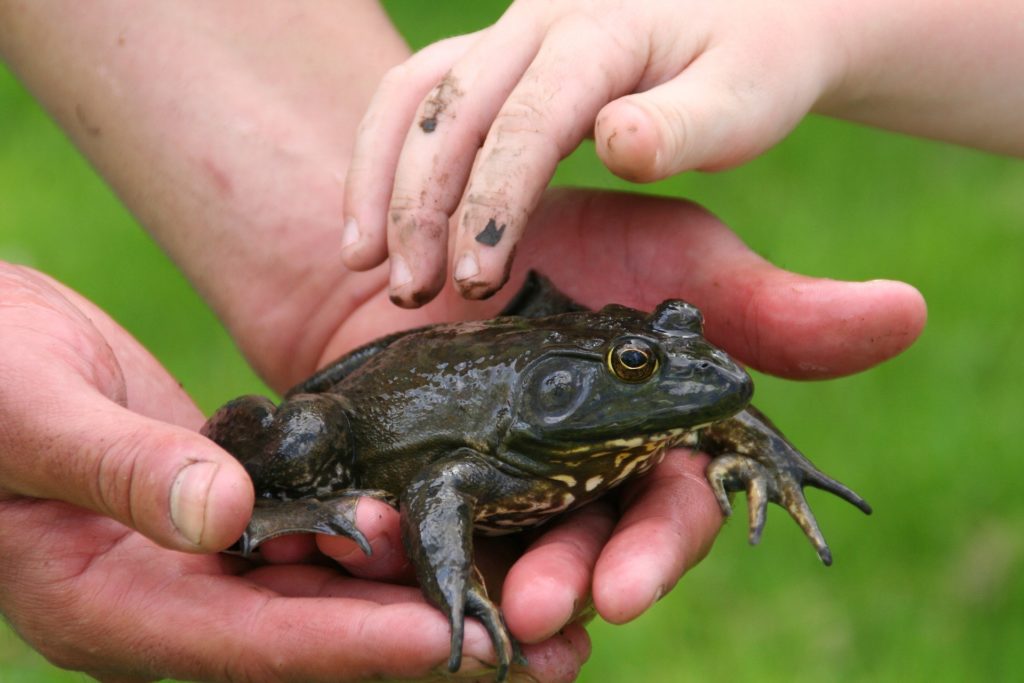Amphibians as Pets

Good pets come in all shapes and sizes. More unique to the pet realm, but still wildly popular, are amphibians. For those pet owners who enjoy the company of frogs, salamanders, and other slimy friends, here are the ins and outs of owning amphibians as pets.
“Owners should educate themselves regarding the specific species or type of amphibian they are considering as a pet prior to purchasing them,” said Dr. Laura Kleinschmidt, veterinary intern instructor at the Texas A&M College of Veterinary Medicine and Biomedical Sciences (CVM). “Depending on the species, they may have species specific requirements or traits that would be important to know.”
For example, some species secrete toxins from their skin or special glands that would make them a less than ideal pet. Amphibians can also have very delicate skin that functions in breathing and absorption and should not be handled more than absolutely necessary. However, if handling is necessary, recommendations include wearing disposable gloves that have any powder rinsed off prior to handling.
It is also important to keep in mind that amphibians are dependent on their environment for temperature regulation, and the preferred optimal temperature zone may vary depending on the species and part of the world they originated from.
“Temperate species usually require at least 60-70 degrees F, tropical species will require higher at least 75-80 degrees F,” said Dr. Kleinschmidt. “Humidity requirements for temperate amphibians usually range from 75-80%, whereas tropical species may require upwards of 85-90%, which could also require misting, waterfalls, humidifiers, etc. to maintain an appropriate range.”
To regulate this, pet amphibian owners should have an appropriate thermostat to determine the temperature and temperature gradients should be maintained to allow the animal thermoregulation.
Providing a type of water source will vary depending upon if the amphibian is aquatic or mainly terrestrial. “Water should always be free of chlorine, ammonia, nitrite, nitrate, pesticides, heavy metals, etc.,” said Dr. Kleinschmidt. “In captive settings, deionized bottled water is usually used, and water should be tested regularly for appropriate pH and lack of these elements.”
The specific water temperature for your amphibian is also very important, and should be closely monitored with an appropriate thermometer. Water heaters are a must in most species to provide lukewarm water, and all water should be changed regularly for cleanliness.
“There should always be filters in place to decrease microbial counts in the water to prevent disease,” said Dr. Kleinschmidt.
As far as feeding requirements go, most amphibians will eat invertebrates, such as insects and worms (usually live). Because of this, owners who are unwilling to handle live insects may not want to have an amphibian as a pet. The food and water you’ve provided must be changed daily, as well as the amphibian’s excrement.
“Make sure the species is being fed the appropriate diet to prevent disease,” said Dr. Kleinschmidt. “Most captive amphibians will need mineral and vitamin supplementation to prevent nutritional-deficiency diseases.”
It is imperative that first time amphibian owners thoroughly educate themselves on the prospective species prior to bringing one home. “I would not recommend an amphibian as a pet for young children (especially without adult supervision) as they should not be handled regularly, and when they are handled, special considerations apply. They also can suffer trauma if handled too brusquely.”
Amphibians are higher maintenance pets that have species-specific requirements for ideal care. If you are willing to put in the effort to properly educate yourself on the species and their specific requirements, as well as spend the money and- time to take good care of them, they can be a great addition to your home.
Pet Talk is a service of the College of Veterinary Medicine & Biomedical Sciences, Texas A&M University. Stories can be viewed on the Web at vetmed.tamu.edu/news/pet-talk. Suggestions for future topics may be directed to editor@cvm.tamu.edu.


